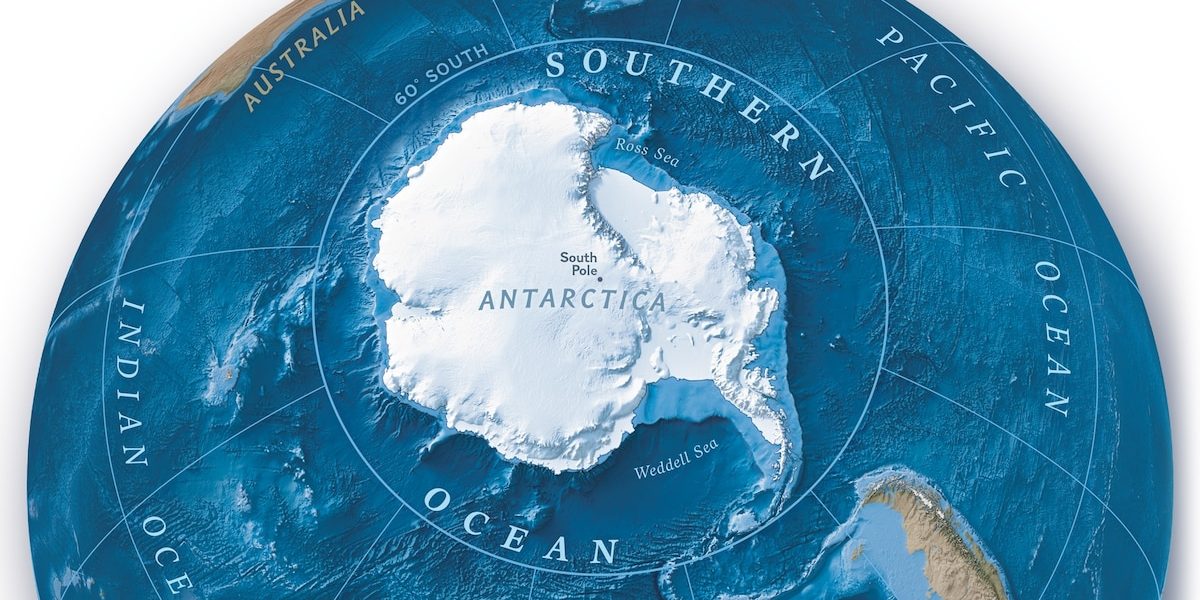The Southern Ocean, a vast expanse encircling Antarctica, remains a mysterious and essential component of Earth’s interconnected systems. In this article, we embark on a journey to explore the unique characteristics, critical ecological roles, and the scientific significance that define the wonders of the Southern Ocean.
Geographical Extent and Boundaries: The Southern Ocean, recognized as the world’s youngest and smallest ocean, surrounds Antarctica and is delineated by the Antarctic Convergence. Its boundaries touch the southern coasts of South America, Africa, Australia, and the southernmost tips of New Zealand.
Oceanographic Features: Known for its tumultuous seas and extreme conditions, the Southern Ocean is characterized by powerful westerly winds, strong currents, and a unique Antarctic Circumpolar Current (ACC). The ACC, the world’s strongest ocean current, flows eastward, unimpeded by any landmass, connecting the Atlantic, Indian, and Pacific Oceans.
Size and Depth: The Southern Ocean spans approximately 20 million square kilometers, making up roughly 5.4% of the Earth’s oceanic area. Despite being the smallest of the world’s oceans, it boasts an impressive average depth of around 4,000 meters, emphasizing its profound influence on global oceanic circulation.
Climate Regulation: The Southern Ocean plays a pivotal role in regulating the Earth’s climate. As the only oceanic gateway to circumpolar currents, it facilitates the exchange of heat, gases, and nutrients between the ocean and the atmosphere. This exchange has far-reaching effects on weather patterns, marine ecosystems, and even atmospheric carbon dioxide levels.
Sea Ice and Icebergs: The Southern Ocean is synonymous with sea ice and icebergs, particularly along its northern boundary. Sea ice, formed during the winter months, expands the ocean’s surface area, influencing global climate patterns. Icebergs calved from Antarctica’s ice shelves navigate the Southern Ocean, shaping its physical and ecological landscape.
Biodiversity and Ecosystems: Despite its frigid waters, the Southern Ocean teems with a rich array of marine life. Iconic species such as krill, which forms the base of the Antarctic food web, support a diverse ecosystem that includes seals, whales, and numerous seabird species. The region’s significance as a feeding ground for marine mammals and birds highlights its critical role in global biodiversity.
Conservation Challenges: The Southern Ocean faces conservation challenges, primarily due to the impacts of climate change and human activities. Warming temperatures, ocean acidification, and overfishing pose significant threats to the delicate balance of the region’s ecosystems. Effective conservation measures are crucial to preserving the unique biodiversity of the Southern Ocean.
Research and Scientific Exploration: Scientific exploration of the wonders of the Southern Ocean has expanded our understanding of Earth’s climate and ocean systems. Research vessels, equipped with advanced technologies, conduct studies on ocean currents, carbon cycling, and marine biodiversity. The region’s inaccessibility and extreme conditions make scientific exploration a formidable undertaking, but the insights gained are invaluable for global climate research.
International Cooperation: International collaboration is paramount for understanding and preserving the Southern Ocean. The Commission for the Conservation of Antarctic Marine Living Resources (CCAMLR), established in 1982, brings together nations to manage and protect the marine life in the Southern Ocean. The collaboration aims to ensure the sustainable use of marine resources while safeguarding the region’s unique ecosystems.
Unique Challenges for Mariners: Navigating the Southern Ocean poses unique challenges for mariners. The combination of fierce winds, massive waves, and icebergs demands skill and experience. The region’s unpredictable weather patterns make it a formidable environment, and vessels crossing the Southern Ocean must be well-equipped and prepared for the harsh conditions.
Economic Significance: While the Southern Ocean is primarily recognized for its ecological importance, it also holds economic significance. Commercial fisheries targeting species such as Patagonian toothfish operate in the region. Balancing economic interests with conservation efforts remains a delicate challenge, necessitating sustainable management practices.
The Southern Ocean, with its daunting beauty and scientific intrigue, stands as a vital component of our planet’s intricate systems. As we continue to explore its depths, we unveil the profound connections between the Southern Ocean and the broader Earth system. The challenges and opportunities presented by this formidable expanse underscore the importance of international cooperation, conservation efforts, and scientific research in preserving the unique ecological tapestry of the Southern Ocean for generations to come. The wonders of the Southern ocean. Do you like Antarctica mysteries? Try Arctic Ave, available on Amazon. You may also read the first chapter of Arctic Masons here on this website.







